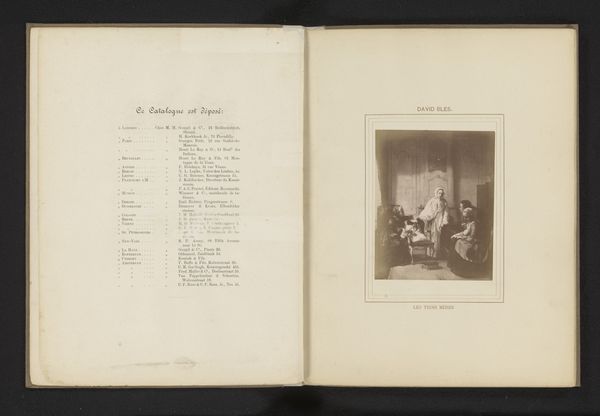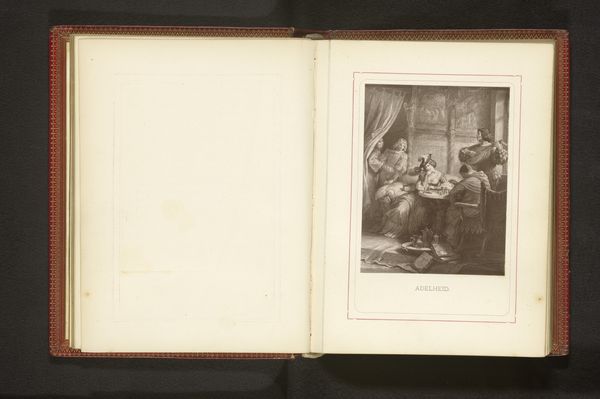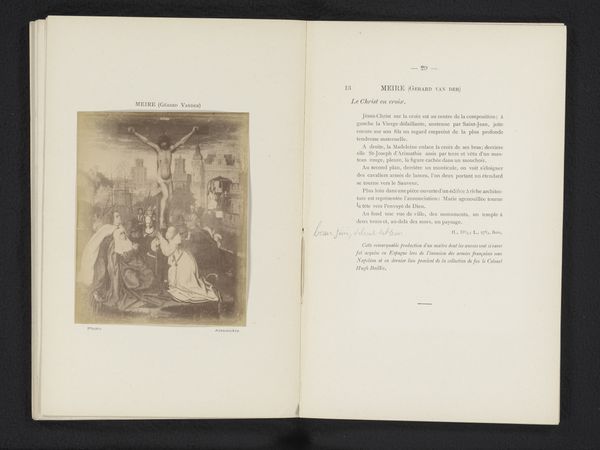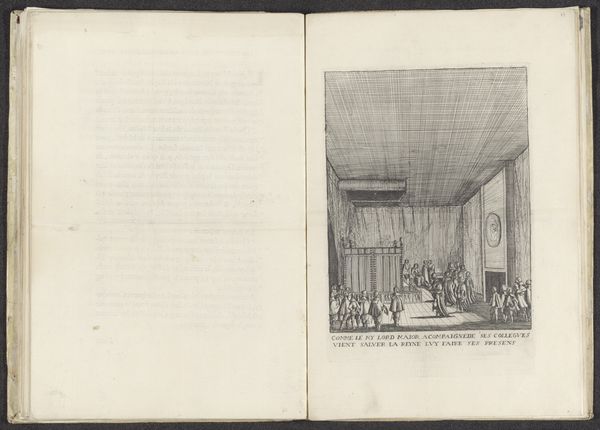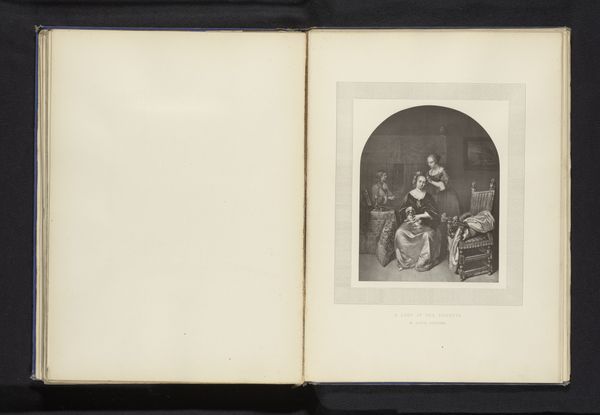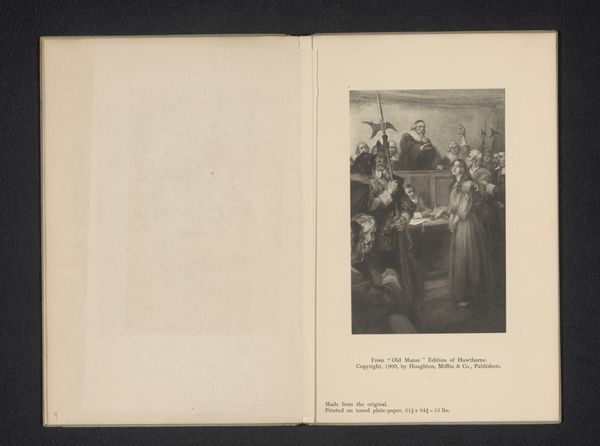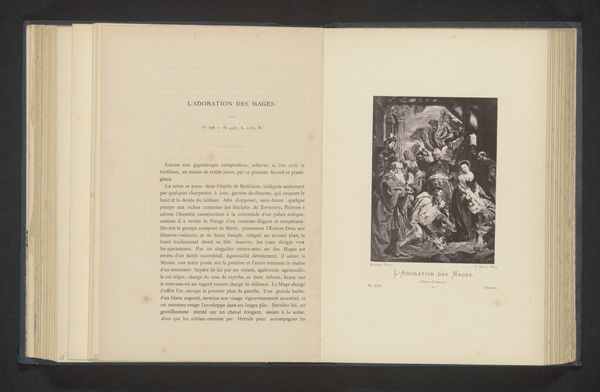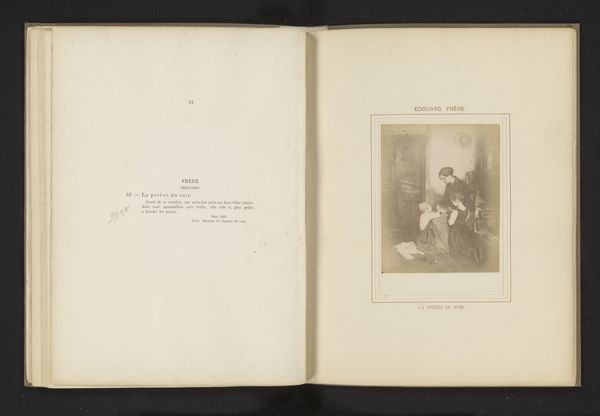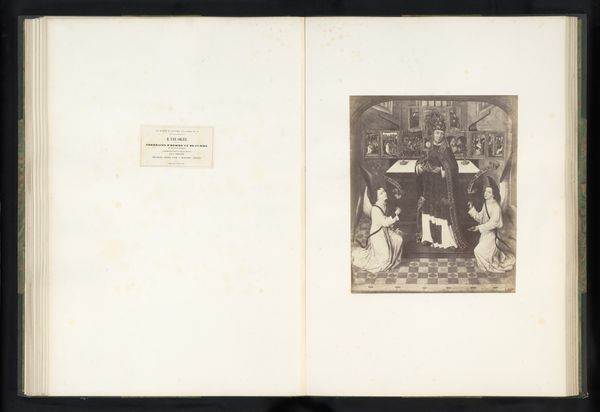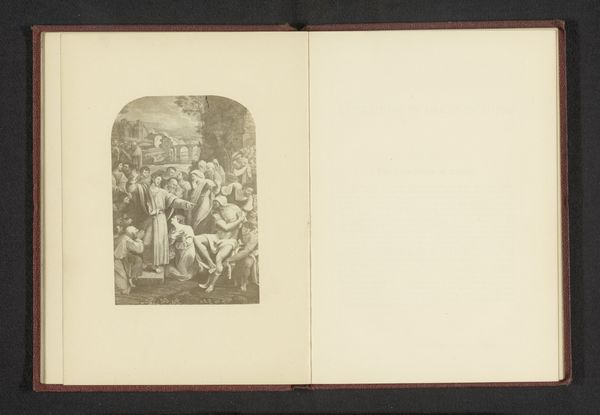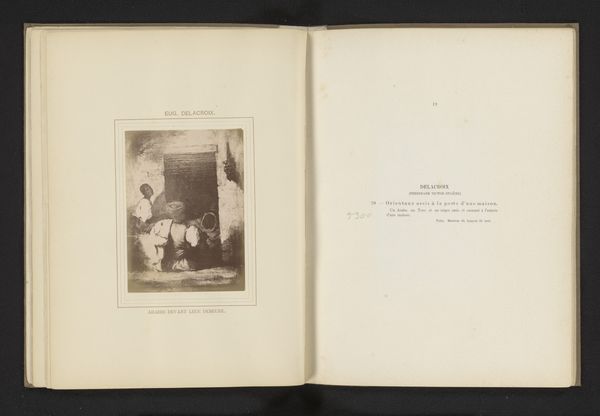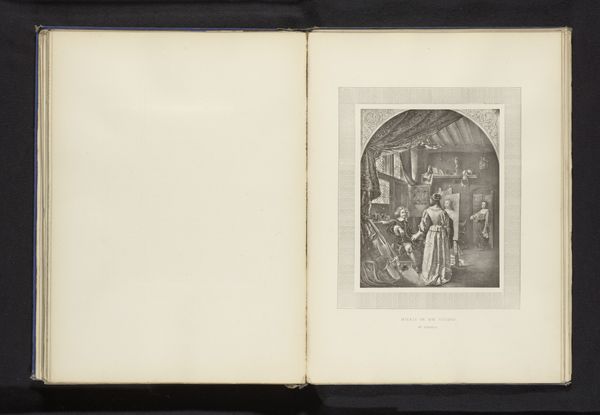
Fotoreproductie van een schilderij van Frederik de Grote aan tafel in Slot Sanssouci door Adolf Menzel before 1868
0:00
0:00
#
aged paper
#
script typography
#
hand drawn type
#
personal sketchbook
#
hand-drawn typeface
#
thick font
#
handwritten font
#
delicate typography
#
historical font
#
small font
Dimensions: height 165 mm, width 140 mm
Copyright: Rijks Museum: Open Domain
Editor: This is a reproduction of a painting by Adolf Menzel, "Fotoreproductie van een schilderij van Frederik de Grote aan tafel in Slot Sanssouci", dated before 1868. It depicts what looks like a royal gathering, and it seems to be printed on aged paper. I am struck by the contrast between the grandeur of the scene and the humble materiality of its presentation. What strikes you about this piece? Curator: I notice the way this reproduction collapses distinctions between the original painting, the photographic process, and the printing methods that render this historical scene consumable for a later audience. We have a hierarchy being flattened here, transforming fine art into a readily distributed object. Do you think the reproductive medium changes how we understand Menzel's original intent, especially considering this piece represents Frederick the Great? Editor: That’s interesting. I hadn’t considered how the means of reproduction democratizes access, but maybe also diminishes the aura of the original artwork and of the subject matter as well. Curator: Precisely! It removes it from the realm of the unique, handcrafted object. Think about the labour involved – from the artist to the photographer to the printer, a whole chain of production impacts how we experience history itself. The consumption of historical moments becomes mediated by these processes. Editor: So, by focusing on the materials and methods, we can understand how this reproduction participates in a larger social and economic system? Curator: Exactly. Consider how the choice of aged paper itself influences our interpretation. Is it meant to lend authenticity, or merely aesthetic appeal? The material qualities are not neutral; they actively shape meaning. Editor: I see, looking at the aged paper, I better understand now why the art work, the history, feels so… tangible. Curator: Right, and remember, questioning those assumed qualities of value is key! Thanks to these material interventions, Menzel's painting becomes an object that implicates both the past it represents and the present in which it circulates. Editor: I’ve definitely learned to appreciate the many layers of meaning embedded within the material aspects of art.
Comments
No comments
Be the first to comment and join the conversation on the ultimate creative platform.
